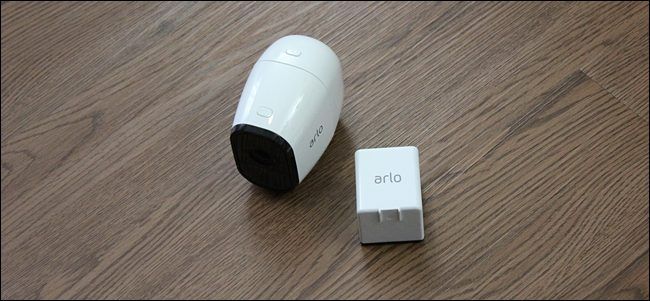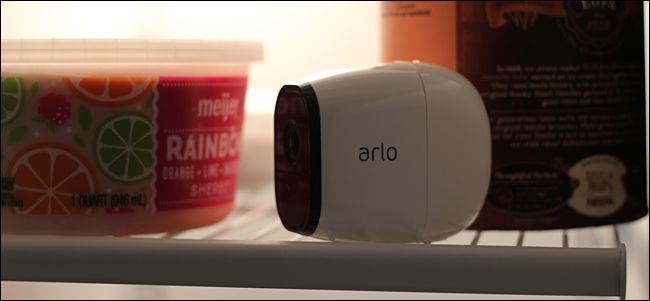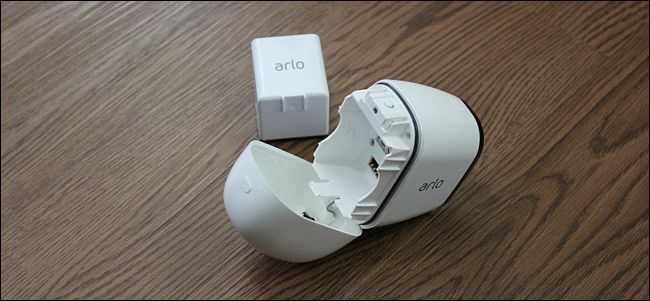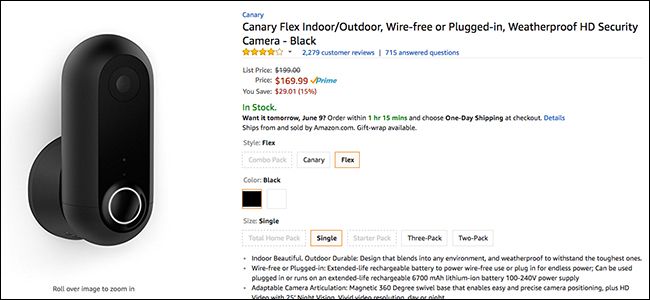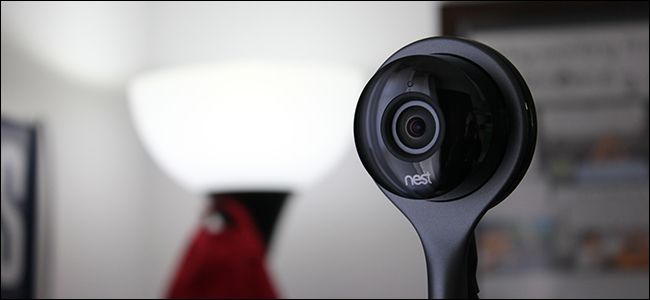Quick Links
Most Wi-Fi cams require that you plug them into an outlet to keep them powered on, but advancements in batteries and energy savings over the last couple of years have led to the popularity of battery-powered Wi-Fi cams. The big question is: are they worth it?
There are several battery-powered options available on the market. We've personally tested out Netgear's Arlo Pro system, but there's also the Blink, Canary Flex, Ring Stick Up Cam, and the Logitech Circle (although the Circle's battery is merely a backup option). There are a host of pros and cons to these wire-free options compared to plug-in cams like the Nest Cam, so here are some things you should know about battery-powered Wi-Fi cams and whether or not they're worth investing in.
They Need to Be Recharged Every Few Months
Unsurprisingly, battery-powered cameras will eventually run out of juice, and they need recharged every so often, which is perhaps one of their biggest downsides.
Granted, many true battery-powered Wi-Fi cams can last several months at least, so you're not going to be recharging them as regularly as your phone. However, it's definitely not something that you can just set up and forget about.
The biggest issue here is that they have be taken offline for a couple of hours while they recharge, which adds some risk as far as your house not being surveilled for a brief period of time. The chances of something happening during a recharge are pretty slim, but the risk is still there.
They Can Easily Be Placed Anywhere
Since battery-powered cameras don't need to be tethered to an outlet, the biggest advantage of these wire-free cameras is that you can place them pretty much anywhere that you want, just as long as it's within your home Wi-Fi network's range.
This gives you a lot more freedom as far as where you can place these cameras and potentially give you a better angle of your front door or back patio that you wouldn't normally be able to accomplish with a wired camera.
Not only that, but battery-powered cameras are a lot easier to install in the first place, especially in locations where running a power cable would be a bit messy.
Video Quality Can Take a Hit
While battery-powered cameras don't offer significantly less video quality by any means, the fact that they're battery powered can have an effect on the video quality, and 1080p isn't guaranteed.
Some wire-free cameras do claim to offer 1080p resolution, but most of them are capped at 720p, including Netgear's Arlo Pro system. This isn't a huge deal, but with 1080p being the standard these days, 720p can be seen as a disadvantage to some users.
However, with our experience with the Arlo Pro, the 720p video quality is good enough; you can clearly see what's going on in the frame and make out faces if the lighting is right, but with any battery-powered camera, you usually can only choose between the best video quality or the best battery life---not both. So you'll definitely be making some compromises.
Batteries Don't Last Forever
Unfortunately, all batteries go to heaven one day. The camera's batteries themselves will likely give out before the camera's hardware does. This happens with smartphones and laptops fairly often; usually the battery needs replaced long before the entire device does, simply because batteries have shorter lifespans.
It's entirely possible that the battery in a wire-free camera will give out in just a few years time, most likely by slow degradation until the battery can no longer hold a charge.
Some battery-powered cameras, like the Arlo Pro, have user-replaceable batteries, which is great to have if the battery itself ever gives out---you can just buy a new battery and you're good to go. However, for some other wire-free cams, the battery isn't replaceable.
They Aren't Any More Expensive Than Wired Cameras
Perhaps the good news with battery-powered Wi-Fi cams is that they don't cost any more than traditional wired cameras, so you won't be paying more for the privilege and convenience of a battery-powered model.
The Canary Flex, Blink, and the Ring Stick Up Cam are all priced under $200, and are competitive with wired cameras like the Nest Cam. The big exception is the Arlo Pro system, which starts at $240 because of the required base station.
So battery or no battery, you won't be paying significantly more or less for a battery-powered camera than a wired camera, making the former all that more appealing.
In the End, Use Them Only When Needed
When it comes down to it, it's best to have a Wi-Fi cam that you can plug into an outlet if at all possible, but battery-powered cameras can be great for certain situations.
The biggest reason to get a battery-powered camera is if you want to mount one outside, but don't want to hassle with running wires through walls. In that case, a wire-free camera is a great option. However, if you're just going to be placing the camera somewhere indoors, more than likely there's an outlet nearby that you can just plug it into and be done with it.

